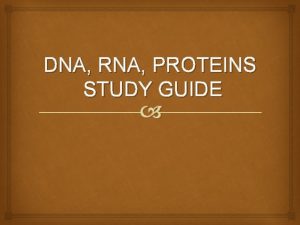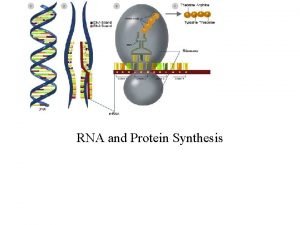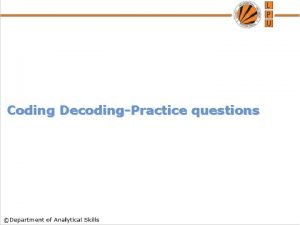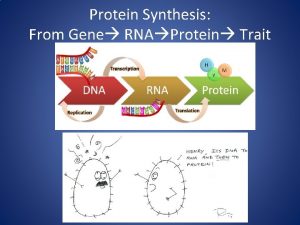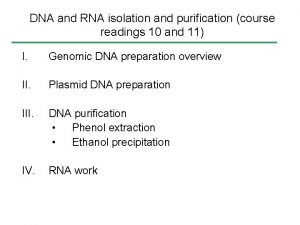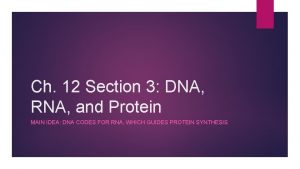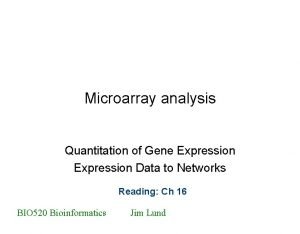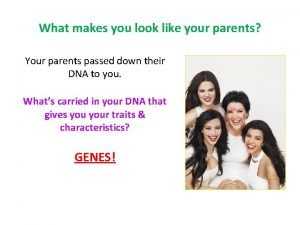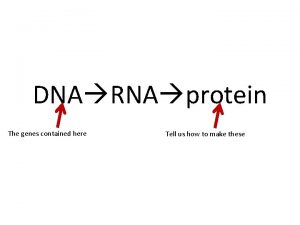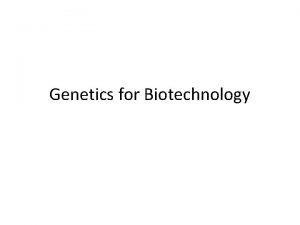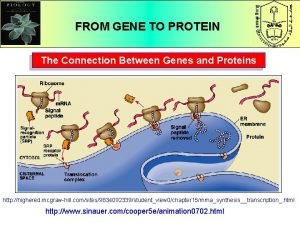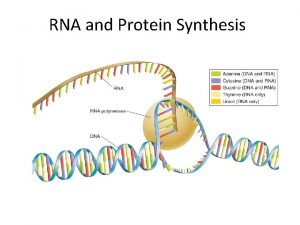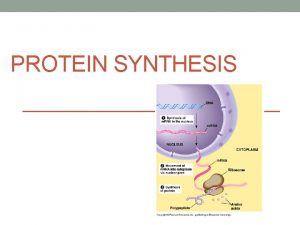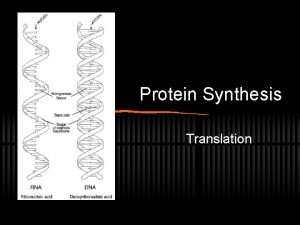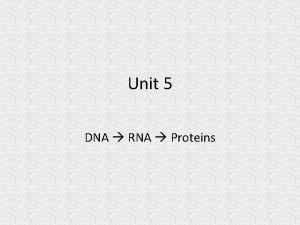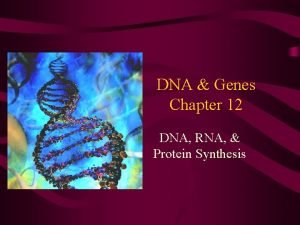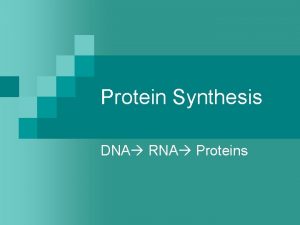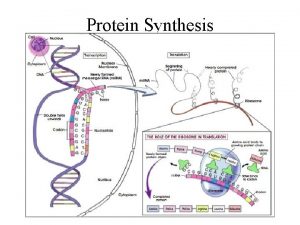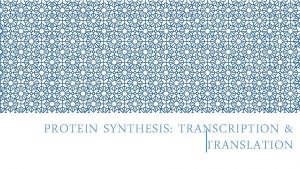RNA Protein Synthesis DNA RNA Proteins Genes coded

















- Slides: 17

RNA & Protein Synthesis

DNA, RNA, & Proteins • Genes: coded instructions for making protein. • RNA is made from DNA. • RNA contains the information to make proteins.

RNA • Ribose Sugar • Single Strand • Uracil (U) DNA • Deoxyribose Sugar • Double Strand • Thymine (T) • RNA: – a disposable copy of a DNA segment. – a working copy of a single gene.

Types of RNA • Messenger RNA (m. RNA): carries a copy of the instructions to make proteins. • Ribosomal RNA (r. RNA): makes up the ribosome, where proteins are made. • Transfer RNA (t. RNA): transfers amino acids to the ribosome.

Transcription • The process of copying part of the DNA to m. RNA. • Occurs in the nucleus. • The DNA strands separate. • One strand of DNA is used as template for RNA. • A stop signal is reached when a RNA molecule is complete.

Transcription

RNA Editing • DNA contains: – Introns: region not involved in proteins – Exons: expressed in proteins • In forming RNA, introns & exons are included. • In the nucleus, introns are cut out. • The remaining exons are spliced together to form the final m. RNA.

The Genetic Code • Proteins are made of chains of amino acids. • The order of amino acids is determined by order of the m. RNA bases. • The m. RNA is divided into three letter sections called codons. • Each codon specifies a specific amino acid.

Codon Sequence Consider the m. RNA sequence: UCGCACGGU It can be read three bases at a time: UCG-CAC-GGU The codons represent different amino acids: UCG-CAC-GGU Ser-His-Gly


Codons • Because there are 4 different bases, there are 64 possible codons. • But there are only 20 amino acids? • Some codons code for several amino acids. • The codon, AUG, represents Met, the only start codon. • There are three stop codons.

Translation • The cell uses m. RNA to make proteins. • Occurs in ribosomes. • A ribosome is like a factory that puts the amino acids together. • Translating English to Russian.

Translation

DNA to Amino Acid DNA: m. RNA: t. RNA: Amino Acid: AGC-GTG-CCA UCG-CAC-GGU AGC-GUG-CCA Ser-His-Gly The m. RNA is used to determine the amino acids, not the t. RNA.

Role of DNA and RNA • DNA is like the master plan for a construction job. • It is too dangerous to take it to the job site, so it stays in the main office, the nucleus. • RNA acts like a blue print, or a disposable copy for the job. • It’s safer to take the blueprint to the job site.


Why are proteins so important? • Many proteins are enzymes, which catalyze and regulate chemical reactions. • Proteins are tools used to operate every component of an organism.
 Dna and genes chapter 11
Dna and genes chapter 11 Dna protein synthesis study guide answers
Dna protein synthesis study guide answers Dna rna and proteins study guide answers
Dna rna and proteins study guide answers Section 12 3 rna and protein synthesis
Section 12 3 rna and protein synthesis Messenger rna codons
Messenger rna codons Section 12 3 rna and protein synthesis
Section 12 3 rna and protein synthesis Rna protein synthesis
Rna protein synthesis Manisha has secured 79
Manisha has secured 79 If baffle is aat4cx
If baffle is aat4cx Protein
Protein Dna rna protein diagram
Dna rna protein diagram Chapter 12 section 3 dna rna and protein
Chapter 12 section 3 dna rna and protein Microarray analysis
Microarray analysis Que es
Que es Dna rna protein
Dna rna protein Dna rna protein central dogma
Dna rna protein central dogma What is the connection between genes and proteins
What is the connection between genes and proteins Polygenic inheritance
Polygenic inheritance


